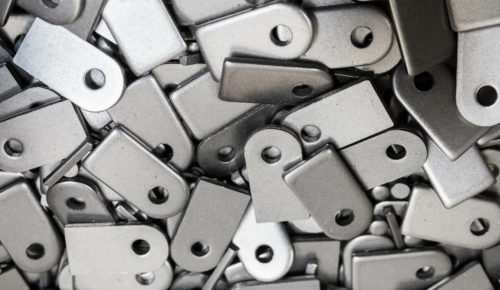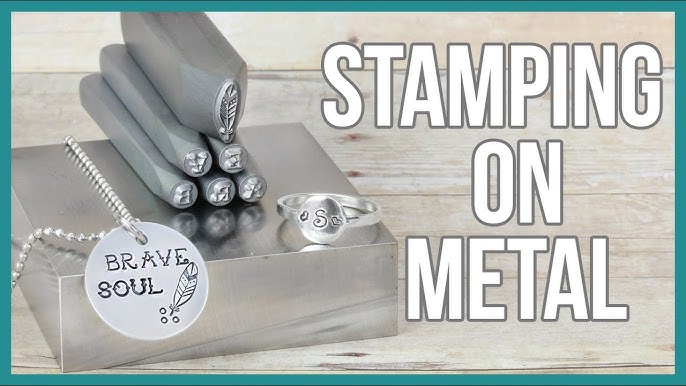Greatest Guide to Metal Stamping Techniques and Applications
Opening the Power of Steel Stamping: Strategies for Enhanced Item Growth
In the world of production, the use of steel marking holds a considerable location because of its adaptability and effectiveness in generating intricate components and elements. However, truth potential of steel marking continues to be untapped by several companies seeking to enhance their item growth procedures. By checking out innovative methods and methods tailored to optimize style, material choice, manufacturing efficiency, and high quality control, companies can unlock a wealth of chances to boost their items to new heights of development and efficiency.
Benefits of Metal Stamping
Steel marking deals a effective and cost-efficient technique for producing top quality steel parts. This manufacturing process includes shaping, reducing, or developing steel sheets making use of a marking press (Metal Stamping). Among the essential advantages of steel marking is its ability to produce complicated geometries with high precision and consistency. This is specifically helpful for industries such as automotive, aerospace, and electronics, where elaborate steel parts are commonly needed.
Additionally, steel stamping enables for high-volume manufacturing, making it excellent for jobs that call for large amounts of metal components. The rate and repeatability of the marking process not just make certain cost financial savings but also contribute to faster turnaround times for production orders. Furthermore, the usage of automatic devices in steel stamping assists decrease the threat of human mistake, bring about enhanced total product high quality.

Layout Optimization Techniques
With mindful consideration of product homes and geometric arrangements, design optimization methods play an essential duty in boosting the performance and capability of metal stamping procedures. By purposefully evaluating aspects such as product strength, type, and density, makers can tailor the style to make best use of the performance of the stamping procedure. Making use of simulation software application, designers can forecast how various style variations will act under different marking problems, permitting the recognition of potential issues before manufacturing starts.
In addition, incorporating features like fillets, chamfers, and embosses into the design can improve the general high quality of the stamped component while reducing the danger of issues such as contorting or breaking. In addition, optimizing the format of functions on the part can boost the product flow during marking, leading to more specific and constant outcomes.
Basically, layout optimization strategies make it possible for manufacturers to adjust their metal stamping procedures, causing improved item quality, boosted production performance, and ultimately, a much more affordable setting in the market.
Material Selection Approaches
Layout optimization techniques in steel marking processes greatly count on calculated material selection techniques to ensure the wanted efficiency and performance of the made parts. The selection of material in steel stamping is crucial as it straight impacts the high quality, resilience, and total performance of the end product. When selecting the ideal product for a particular project, variables such as mechanical homes, formability, cost-effectiveness, and corrosion resistance need to be taken into account.

Stabilizing the performance needs with the overall price of materials is crucial to make sure the financial practicality of the production procedure. browse around this web-site By carefully examining these facets, producers can maximize their material choice strategies to attain remarkable product high quality and operational efficiency.
Enhancing Production Efficiency
Performance in production procedures is an essential factor for ensuring cost-effectiveness and prompt distribution of high-quality metal stamped parts. To improve production efficiency in metal marking, several approaches can be executed.
Furthermore, carrying out automation and robotics in metal stamping procedures can dramatically enhance productivity and consistency while decreasing labor costs. Automated systems can execute recurring tasks with high accuracy and rate, causing improved manufacturing effectiveness and greater output prices. Purchasing modern marking devices with advanced attributes, such as servo-driven presses and fast die modification systems, can even more optimize manufacturing procedures and decrease downtime.
In addition, establishing clear communication networks and cultivating collaboration between design, production, and style teams is vital for determining prospective traffic jams and carrying out continual improvements in the manufacturing workflow - Metal Stamping. By accepting lean production principles and leveraging modern technology improvements, producers can open the full potential of steel stamping procedures and achieve higher manufacturing efficiency
High Quality Control and Evaluation Methods
To make sure the regular production of top notch steel stamped components, extensive quality control and inspection methods play a critical function in verifying the precision and integrity of the manufacturing procedure. Quality assurance in metal marking entails a series of organized checks and measures to ensure that each component fulfills the given needs. Evaluation techniques such as aesthetic examination, dimensional analysis, and material screening are typically used to assess the high quality of stamped elements. Aesthetic assessments make certain the surface coating and integrity of the components, while dimensional analysis verifies that the parts adapt the needed specs. Material testing techniques like hardness testing and material structure evaluation aid validate the product residential properties and structural stability of the stamped parts. Additionally, advanced technologies such as automated optical assessment systems and coordinate gauging machines are progressively being used to improve the precision and effectiveness of top quality control procedures in metal stamping. By applying durable top quality control and evaluation methods, suppliers can maintain high standards of high quality and consistency in their metal stamped items.
Final Thought
In conclusion, metal marking deals numerous benefits such as cost-effectiveness, precision, and adaptability in item view website development. By implementing layout optimization strategies, choosing suitable materials, and improving manufacturing performance, manufacturers can attain greater quality products with minimized preparations. Quality assurance and examination methods play a vital role in guaranteeing the end products satisfy the needed requirements. Generally, opening the power of steel marking needs a calculated strategy to boost item growth processes.
Metal stamping deals a cost-efficient and effective method for producing top quality metal parts.Additionally, steel stamping allows for high-volume production, making it perfect for projects that need large amounts of steel parts.Through mindful factor to consider of product buildings read this article and geometric configurations, design optimization techniques play an essential duty in enhancing the efficiency and capability of metal marking procedures.Layout optimization methods in metal stamping procedures heavily rely on tactical product option approaches to ensure the desired efficiency and efficiency of the produced components. The choice of product in steel stamping is crucial as it directly influences the high quality, durability, and general functionality of the final item.